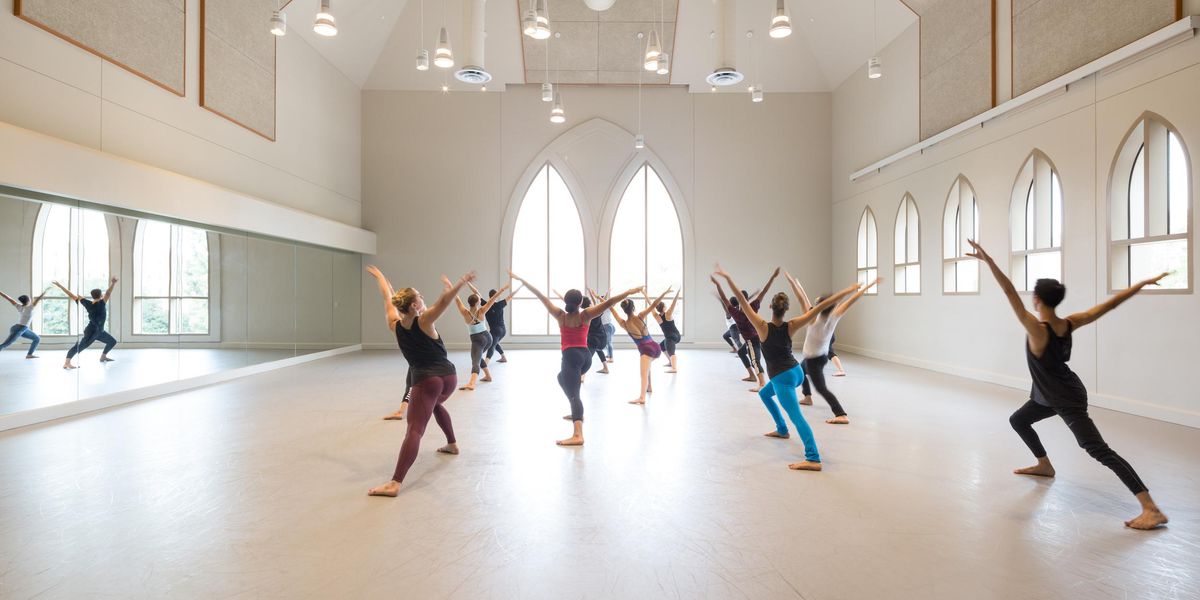Your Body: Working Out With Sara Mearns
The NYCB principal uses cross-training to lengthen and support her body without wearing it out.
Mearns, here in Allegro Brillante, starts her warm-up with a hot shower. Photo by Paul Kolnik, courtesy NYCB.
A few years ago, Sara Mearns’ weeks were packed with gym visits and Gyrotonic training. But as her schedule at New York City Ballet became more intense, she found the additional strength training only made her asymmetrical body (Mearns’ spine has both a scoliosis curve and a twist) tighter and more muscle-bound. Then, after landing from a jump during rehearsal in 2012, she severely strained the back muscles on the right side of her body. It took eight months for her to fully recover, and the jarring injury forced her to pay more attention to the very particular needs of her own body.
“Ever since my back injury, I had to stop doing all that,” Mearns says of her intense cross-training regimen. “Through physical therapy I developed my own daily ritual of preparation and stretching.”
Her 45-minute warm-up now consists mostly of rolling out and stretching, though she also does standard core exercises to make sure her back remains supported. After a hot shower, she spends 15 minutes on the roller, focusing on her trigger points. Once she’s loosened up, she performs a series of stretches to target her psoas, glutes, hamstrings and back. “I have to lengthen those things before the day starts,” explains Mearns, “and then I return to them continually throughout the day on my breaks.”
But Mearns is quick to point out that she is not doing the kind of extreme overstretching that strains the joints. When she puts her leg on the barre, she keeps it no higher than 90 degrees and adds in a side cambré to get at her quadratus lumborum muscle in her lower back which sometimes gets tight. During lunging psoas stretches, she also makes sure to perform them both turned in and turned out. “You get weak if you only stretch one way,” says Mearns, who has learned to complement instead of compound the demands of her ballet career. When she began private Gyrotonic training five years ago, her repertoire wasn’t as demanding. “We would practice barre together and talk about how to be grounded, how to stand, where my shoulders should be,” says Mearns, “and I still think about all those things I learned. I just don’t do it as a separate workout.”
Fueling for Performance
“I’m not into big meals or overly sweet stuff—it just makes me thirsty and shaky,” says Mearns, who instead opts for cashews, Greek yogurt and bananas pre-show and saves her dinner of veggies, pasta and protein for post-curtain.
Photo by Nathan Sayers.
Psoas Stretching, Two Ways
The psoas is one of the primary hip-flexor muscles and in ballet, it is often overworked from daily battements and développés. Here are two ways Mearns lengthens this hard-to-stretch muscle.
Sit on the floor in a fourth position, with one leg turned out and bent at a 90-degree angle in front of you and the other leg completely turned-in and bent to the side. From this position, try to get the sitz bone of the back leg to be as heavy on the floor as the sitz bone of the front leg.
Take a lunge stance with one foot forward and one back. Bend your front knee so that it is above your ankle and press your back foot into the floor. Focus on lengthening the tailbone down and lifting the front of the hips up. Mearns suggests trying this with the back leg turned in, as well as with a slight turnout.




